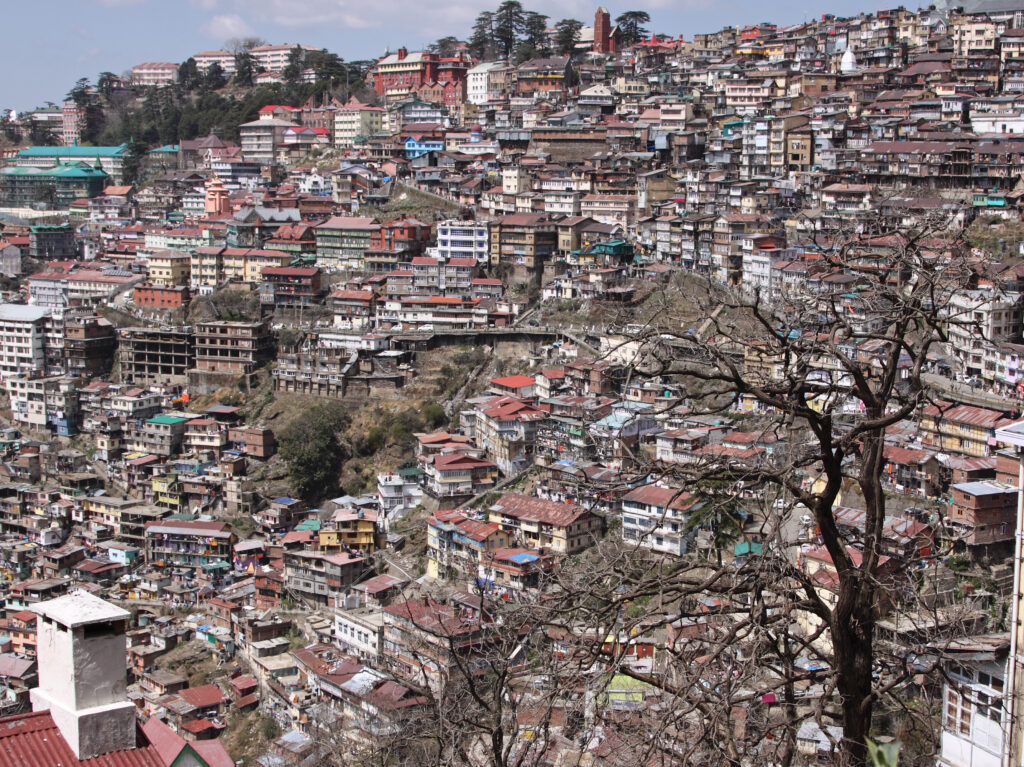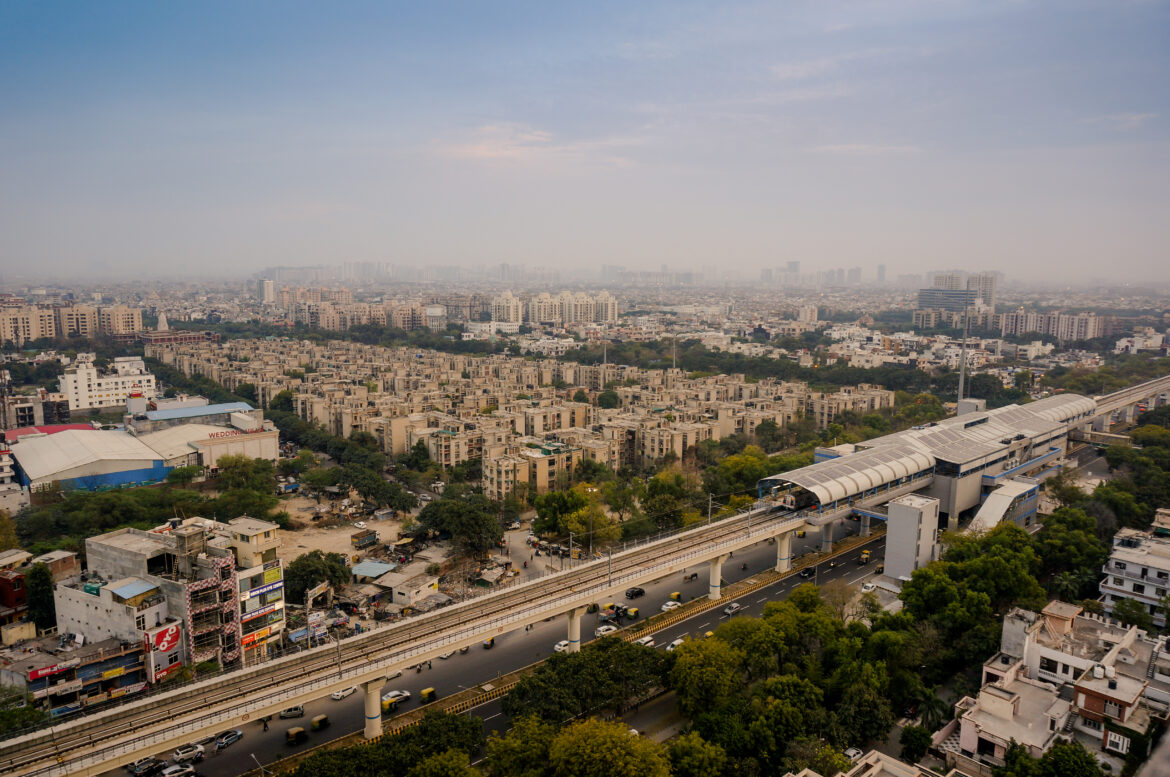With rapid urbanization, cities in India are faced with huge challenges of ensuring their inhabitation is resilient against natural calamities. In a country where unpredictable disaster risks and climate change impacts affect communities daily, it is essential to build strong urban infrastructures and environments that are able to withstand such risks.
Cities across India are highly vulnerable and unprepared for the various kinds of disasters that pose a threat to the lives and livelihoods of expats and locals alike. With an emphasis on building stronger, more sustainable and secure cities, there is a need for new infrastructure designs and technologies that take into consideration the needs of citizens in the face of urgent humanitarian crises.
This article will explore some innovative solutions for resilient urban infrastructure for Indian cities, highlighting projects from pilot cities like Hyderabad and Pune exhibiting replicable models that may be applied by other municipalities throughout India.
Overview of current urban infrastructure in India
Urban infrastructure in India is an important element for sustainable development and covers a variety of sectors such as transportation, energy, water and sanitation, buildings, land use planning and solid waste management. Urban infrastructure have been largely driven by the government’s focus on improving the quality of life in cities.
India has established both the National Action Plan for Climate Change (NAPCC) in 2008 and the National Disaster Management Plan (NDMP) in 2016. These plans outline long, medium, and short-term actions for the various stakeholders involved to reduce risks and foster sustainable development. It is important to consider urban resilience in order to protect infrastructure investments, access institutional resources, and streamline urban governance.
The Indian government has taken several steps to improve urban infrastructure, such as the Smart Cities Mission, the Atal Mission for Rejuvenation and Urban Transformation (AMRUT), Pradhan Mantri Awas Yojana – Urban (PMAY-U) and Swachh Bharat Mission – Urban (SBM-U). Adopting a resilience-based approach to these programs and projects can facilitate a forward-thinking, risk-aware, inclusive and coordinated urban transformation in India.
Challenges faced due to rapid urbanization
Rapid urbanization presents a variety of challenges to cities, such as increased pressure on existing infrastructure, traffic congestion, pollution, and a lack of affordable housing. India has seen an increase in urban population over the past few years due to rapid urbanization. Many of the most significant challenges India faces due to rapid urbanization stem from the rate of population growth. Mass migration from rural areas to cities has led to an increase in both poverty and crime, as well as poor housing conditions and other social problems. Additionally, this influx of people has caused strain on infrastructure, environmental pollution, and overcrowded streets.

Image: Rapid urbanization is taking a toll on Shimla, India
This has also led to tremendous changes in land use and rapid growth of cities, towns and villages and created numerous challenges for Indian cities including inadequate resources such as water, energy and food, increasing pollution levels, traffic congestion, housing shortages, and lack of healthcare facilities. All these problems need to be addressed if India is to keep up with its progress and development as one of the most powerful countries in the world in the coming years.
Importance of resilient cities
Resilient cities are those that have adopted strategies to become more “future-resistant” and respond better to turbulence from social, economic, political, or technological change. Investing in prevention helps reduce the magnitude of the impact of future events, minimizes associated financial costs, and increases overall livability for residents. Resilience is key for cities to thrive in an uncertain world, and it can improve sustainability, foster economic resilience, strengthen social cohesion and reduce vicious cycles of poverty and marginalization. Through greater collaboration between governments, businesses, civil society organizations and citizens, resilient cities can be built where all people benefit from urban growth.
Resilient urban infrastructure is crucial for India to successfully navigate the future. India’s cities are particularly vulnerable to heatwaves, droughts, floods, and severe storm events. To build resilient cities, it is necessary to adopt practices that increase the city’s capacity to endure shocks such as these. This requires changes in traditional practices of urban planning and governance; sustainable urban infrastructure must be designed to be resilient. Additionally, green infrastructure should be encouraged – this includes increasing green spaces, constructing rain gardens and terracotta filters in residential areas, harvesting greywater and providing water storage tanks in residential buildings – all of which aim at reducing urban risk factors and creating a healthier environment for residents.
Innovative solutions for resilient urban infrastructure
India’s urban areas have been experiencing rapid growth in population and economic activities, leading to increased pressure on urban infrastructure. To meet these challenges, India needs innovative strategies to improve infrastructure, ensure adequate housing and sanitation, reduce overcrowding, and address environmental issues. Innovative solutions such as the use of smart technology, sustainable city development models, improved transportation networks, renewable energy sources such as solar power, better waste management practices, resourceful water management initiatives, and green building practices are essential for ensuring resilient infrastructure in Indian cities. Some of these innovative solutions that can meet the growing demand and adapt to the changing needs of urban residents are explained below:
Green Infrastructure
The incorporation of green infrastructure, such as parks, green roofs, and rainwater harvesting systems, can help in reducing the urban heat island effect, improving air quality, and managing stormwater runoff. In India, several cities have started implementing green infrastructure to improve their resilience. For example, the city of Chennai has created a network of green spaces that act as natural stormwater retention ponds, preventing floods during heavy rainfall. In Mumbai, the Green Cover project is creating more green spaces to help reduce the effects of urban heat islands, air pollution, and flooding.
Smart Transportation Systems
It refers to the integration of technology and innovative transportation infrastructure to enhance the efficiency, safety, and sustainability of transportation systems in the country. In India, several cities such as Surat have implemented Smart Transportation Systems to modernize their transport infrastructure and improve the commuting experience of citizens. Surat’s STS includes various initiatives such as Intelligent Transport System (ITS), City Bus Rapid Transit System (BRTS), and Integrated Transit Management System (ITMS).
Decentralized Water and Waste Management
Traditional centralized systems for water and waste management are expensive and often inefficient. Decentralized systems, on the other hand, are more cost-effective and can be customized to the specific needs of a community. The implementation of efficient waste management systems, such as waste-to-energy plants and biogas plants, can help in reducing the burden on landfills and promoting sustainable waste management practices. In addition, the use of waste segregation at source, incentivizing recycling, and promoting composting can help in reducing the amount of waste generated in cities. In India, several cities have started implementing decentralized water and waste management systems. For example, the city of Coimbatore has implemented a decentralized solid waste management system, where waste is segregated at source and processed locally.
Affordable Housing
Rapid urbanization has led to a shortage of affordable housing in many cities in India. Innovative solutions like micro-housing and modular housing are emerging to meet this demand.
These new innovations can provide the nation with long-term sustainable economic growth while also increasing quality of life in cities. As the country continues to urbanize, it is important that these solutions are scaled up and implemented to create livable and sustainable cities.
Step taken by the government to build resilient cities
The Indian government has taken numerous initiatives to create polycentric urban agglomerations that are resilient and efficient. These measures include the ‘Smart Cities Mission’, the ‘AMRUT’ (Atal Mission for Rejuvenation and Urban Transformation) mission, the ‘Pradhan Mantri Awas Yojana’, ‘Swachh Bharat Mission’, as well as schemes such as ‘Solar Rooftop Scheme’ and ‘Deendayal Upadhyaya Gram Jyoti Yojana’. All these schemes focus on developing better infrastructure with an emphasis on sustainability in order to make cities less prone to floods, heat waves, and other climate change-related risks. The government is investing a lot of resources in order to build green, resource-efficient and resilient cities that can withstand all manner of environmental challenges.
Some state projects are also promoting resilient infrastructure developments. One such example is the Hyderabad Urban Resilience Project, which has been implemented by the Greater Hyderabad Municipal Corporation (GHMC). This project focuses on strengthening urban infrastructure and services to make them more resilient to disasters. The project includes initiatives such as improving drainage systems, constructing flood-resistant roads and bridges, and setting up early warning systems for floods. It also involves retrofitting existing buildings to make them more resilient to earthquakes and other disasters.
Another example is the Pune Smart City project, which has been implemented by the Pune Municipal Corporation (PMC). One of the key focuses of the Pune Smart City project is to create a resilient infrastructure that can withstand natural disasters and other crises. The city has been prone to frequent floods, earthquakes, and other hazards, and therefore, building urban resilience has become a critical issue. This project focuses on developing a comprehensive urban infrastructure that is resilient to natural disasters. The project includes initiatives such as constructing flood-resistant roads and bridges, improving drainage systems, setting up early warning systems for floods, and retrofitting existing buildings.
Conclusion
There is a need for the Indian government to continue investing in resilient urban infrastructure projects in order to create sustainable and livable cities. It is important that these projects are implemented with a focus on sustainability and efficiency, so that they can be maintained over the long-term. Furthermore, such projects should take into consideration local environmental conditions and cultural values, so that they can be adapted to different cities and regions. The government should offer incentives to improve resource-specific areas, thereby increasing resilience against future crises.


